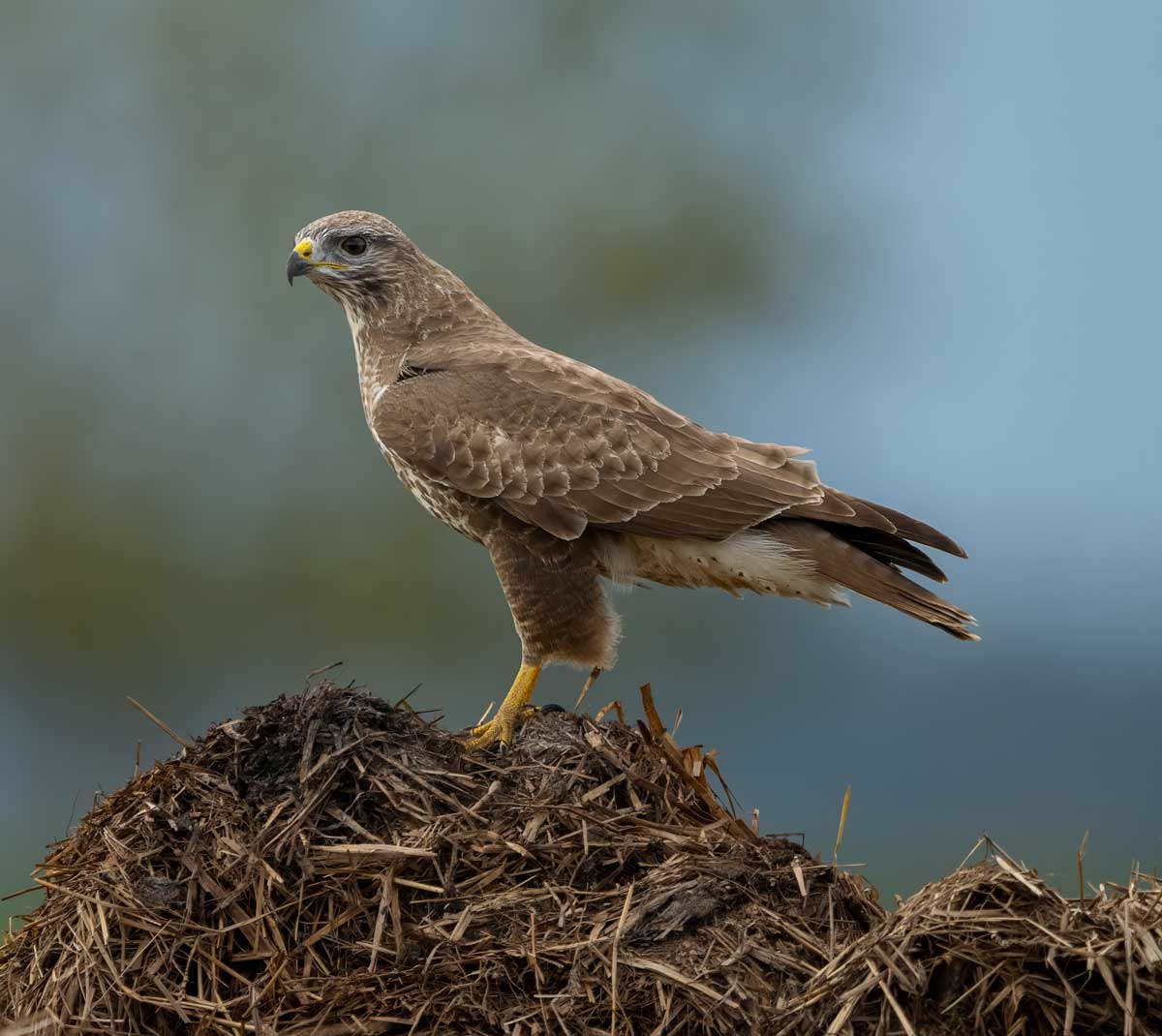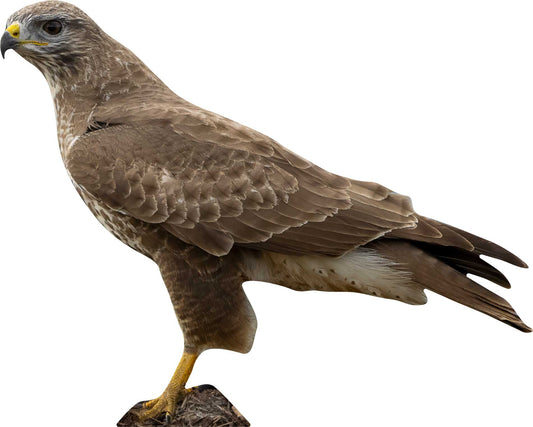
buzzard
The Common Buzzard, a widespread bird of prey, plays an important role in the ecosystem by controlling small mammal populations. This fact sheet provides a detailed overview of the biology and ecology of the Common Buzzard and highlights the importance of conservation measures to preserve its natural environment and nesting sites.
buzzard Products
-
Animal display buzzard
No reviewsRegular price From 59,90€Regular priceUnit price / per -
Animal display buzzard - outdoor set
No reviewsRegular price 67,70€Regular priceUnit price / per
Profile: buzzard
-
Scientific classification
- Class: Aves (birds)
- Order: Accipitriformes (birds of prey)
- Family: Accipitridae (Accipitridae)
- Genus: Buteo
- Species: B. buteo (Common Buzzard)
-
Physical characteristics
- Size: Body length of 51-57 cm
- Wingspan: 113-128 cm
- Weight: 425-1400 g, depending on gender and subspecies
- Special features: Broad wings and short tail, typical of buzzards; plumage varies from almost pure white to dark brown.
-
Habitat and distribution
- Common regions: Widely distributed in Europe, parts of Asia and North Africa
- Habitat: Open landscapes such as fields, meadows and light forests, avoids dense forests and high mountains
- Adaptability: Very high, can live in different environments from sea level to medium altitudes
-
Nutrition
- Diet: Mainly small mammals, especially field mice; also birds, insects, worms and sometimes carrion
- Typical Diet: The diet may vary seasonally based on the availability of prey.
-
Reproduction and lifestyle
- Mating season: Spring
- Nest type: Large nests in trees, often built on old crow nests
- Number of eggs: 2-4 eggs
- Incubation period: About 33-38 days
- Social structure: Mostly solitary, except during the mating season, forming pairs that can stay together for years
-
Lifespan and protection status
- Life expectancy: Up to 25 years in the wild, but on average less
- Endangered status: Not threatened; stable populations thanks to widespread distribution and adaptability
- Conservation measures: Habitat protection is crucial, especially the preservation of nesting sites and hunting areas


